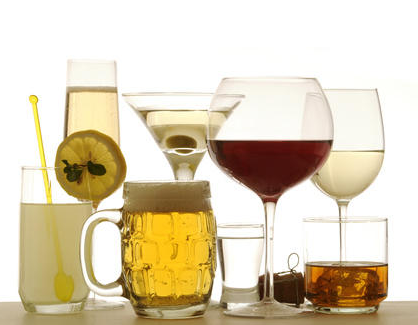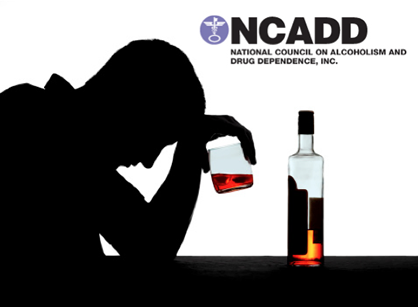The Dangers of Alcohol Use: Celebrating Alcohol Awareness Month
I should have called. Jim* knows he will live with the regret for the rest of his life. His 19-year-old nephew suffered from alcoholism and drug addiction. Looking to help, Jim stumbled across the website of the National Council on Alcoholism and Drug Dependence. Inspired, he scribbled the phone number down and put it beside his phone, intending to call and get help. A couple of months later, before Jim got around to calling, his nephew died of a drug overdose. His message: “Please tell everyone you talk to who is thinking about getting help- don’t wait. Get help now before it’s too late!”
More than 18 million Americans over the age of 18 have an alcohol use disorder. All told, it causes more than 80,000 deaths per year, making it the third leading preventable cause of death in the United States.
“Plain and simple, alcoholism effects each and every one of us, directly or indirectly,” Robert Lindsey, president and CEO of NCADD said, declaring it the United States’ number one health problem.
The effects of alcohol can be devastating – and numerous. Heavy alcohol consumption can cause a range of health problems: dementia, stroke, cardiovascular troubles and heart disease, depression, anxiety, liver disease, increased risk for several types of cancer and more. Moreover, excessive use can cause deaths from other sources, such as traffic crashes and suicide, as well as many social problems, including unemployment, lost productivity, family problems, violence, child maltreatment and homicide.
With this list, it may seem crazy that so many people use alcohol and cannot stop. But alcohol is a powerful, addictive drug.
“Most people rely on a ‘common sense’ approach to alcoholism. Regrettably, ‘common sense’ and alcoholism are a disaster every single time, for the individual as well as for family and friends. Alcoholism is not a choice or a matter of willpower. Plain and simple, some people metabolize and respond to alcohol differently than others, just like a person who is diabetic and their response to insulin and sugar,” Lindsey said.
Alcohol Awareness Month can serve as a starting point to take action for many. Since 1987, the NCADD, serving as a “voice of hope, help and healing” for those touched by alcoholism and addiction, has celebrated Alcohol Awareness Month every April. The month is a time to increase public awareness and attempt to fight the stigma that can prohibit millions of drinkers from seeking the assistance they need to stop. Through mass media, awareness campaigns, program and a variety of local events, the NCADD aims to spread the message that we all must come together to address this deadly health problem.
“During Alcohol Awareness Month, NCADD and NCADD’s National Network of Affiliates reach out in communities across the country to bring the American public information about alcohol and alcoholism as a chronic, progressive disease, fatal if untreated, and genetically predisposed. The disease of alcoholism is a family disease that is treatable, not a moral weakness, from which people can and do recover. In fact, millions of individuals and family members are living lives in long-term recovery from alcoholism,” Lindsey declared.

Women can suffer more from alcoholism than men. For example, women’s death rates from the addiction are almost 75 percent higher than the rates for men. This phenomenon is partially attributed to the fact that men, in general, have more muscle and less fat than women. As muscle contains more water than does fat, alcohol can become more diluted in a man, leading to a lower blood alcohol concentration in men. Men therefore experience the effects of alcohol later than women. Women are also playing catch up to men in their drinking habits; young women today drink nearly as much as men do.
In 2009, 47 percent of women 12 years old and older reported having had a drink in the past month. Fully 16 percent were binge drinkers (consuming five or more drinks in one sitting in the past month) and 3.5 percent were heavy drinkers. Rates for adult men’s use were slightly higher, at 58 percent. Marriage appears to be a deterrent for women: Heaving drinking is more commonly seen among women who are unmarried, divorced or separated.
Alcohol also brings with its more risks for women than men, being associated with violence, unplanned and unsafe sex, and sexual assault. All of these risks are more commonly experienced among women who are heavy drinkers.
Many myths surround alcoholism. People can start to believe they can stop anytime they want, or that they cannot be an alcoholic because they do not drink hard alcohol, because they have a good job and friends, because they are simply under stress or depressed, or because their use is perceived as similar to their friends. They can deceive themselves that the problem is not that bad.
“Regrettably, these common myths and misconceptions prevent millions of people from seeking help,” Lindsey said. “Alcoholism has little to do with what kind of alcohol one drinks, how long one has been drinking, or even exactly how much alcohol one consumes. But it has everything to do with what happens when you drink. If someone’s drinking is causing problems physically, emotionally, at work, financially, legally, in their family and with other relationships and they continue to drink, it’s time to get help.”
Although some drinkers are able to recover without seeking outside help, most need help to stop their abuse. Through support and treatment, such as the support NCADD offers, many alcoholics can stop drinking and get their lives back.
“(The month) gets people thinking, talking and committed to taking action,” the CEO said. “For too many, they regard alcohol as ‘just a drink,’ like water, juice, milk or other beverage. But alcohol is a sedative drug delivered in a beverage and as such is totally different. Helping people think about their use of alcohol and how affects their life and the lives of those around them is critically important.”
As the leading recovery and help organization for those with an alcohol problem, the NCADD has assisted millions through education, prevention, intervention, treatment, recovery support and advocacy. Each year, more than half a million individuals contact the NCADD looking for assistance. This year alone, the NCADD anticipates more than 2 million visitors to its website. Consider being one of them and breaking the cycle of addiction.
“We all need to be invested in the solution – not the problem. The scope of the problem is overwhelming. But NCADD is dedicated to focusing on the solutions, which is far more productive! Each of us has a responsibility to be part of the solution, as a member, volunteer, donor, board member, advocate or some other role,” Lindsey said.
If you are seeking help or have questions about this health problem, the NCADD recommends finding someone who is “specifically trained and successfully experienced” in dealing with alcohol use. Many health care and mental health providers are not. For more information or to find experienced help, contact www.ncadd.org.
Tagged in: lux exclusives, alcohol, alcoholism, alcohol awareness month,

LadyLUX



